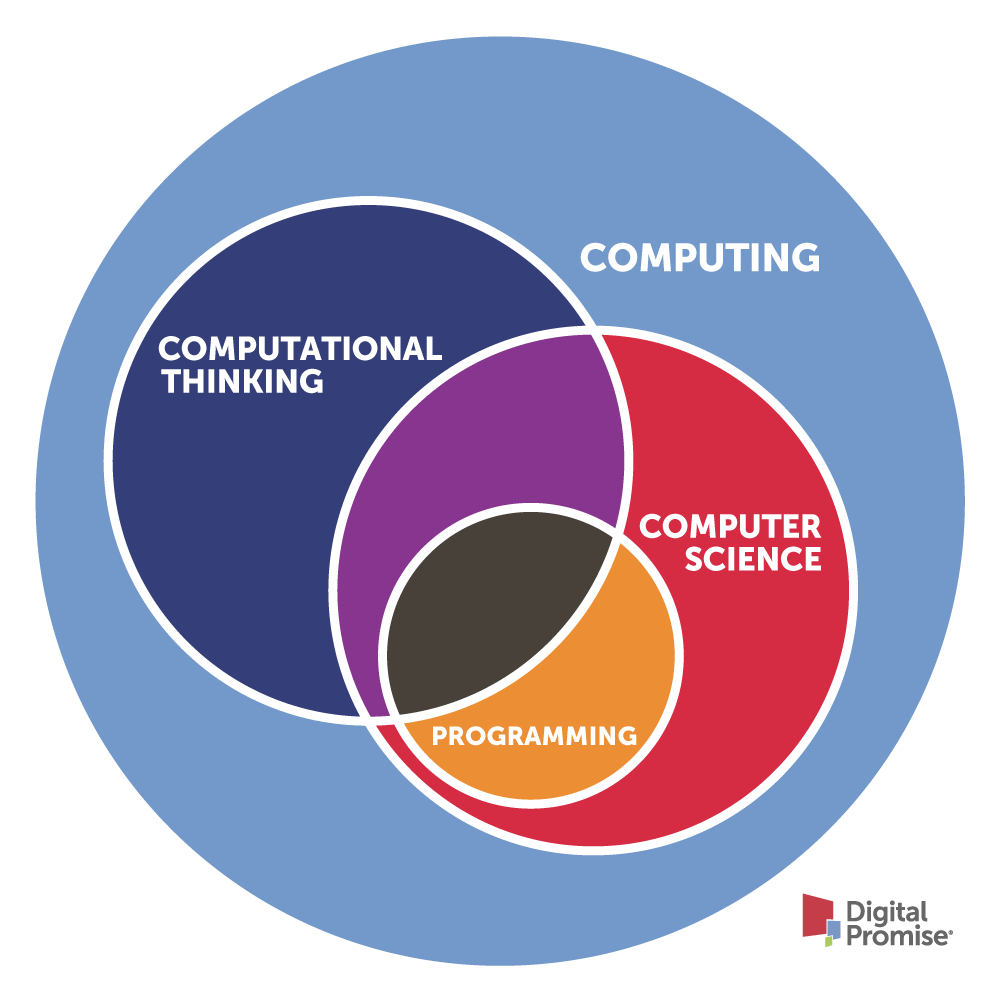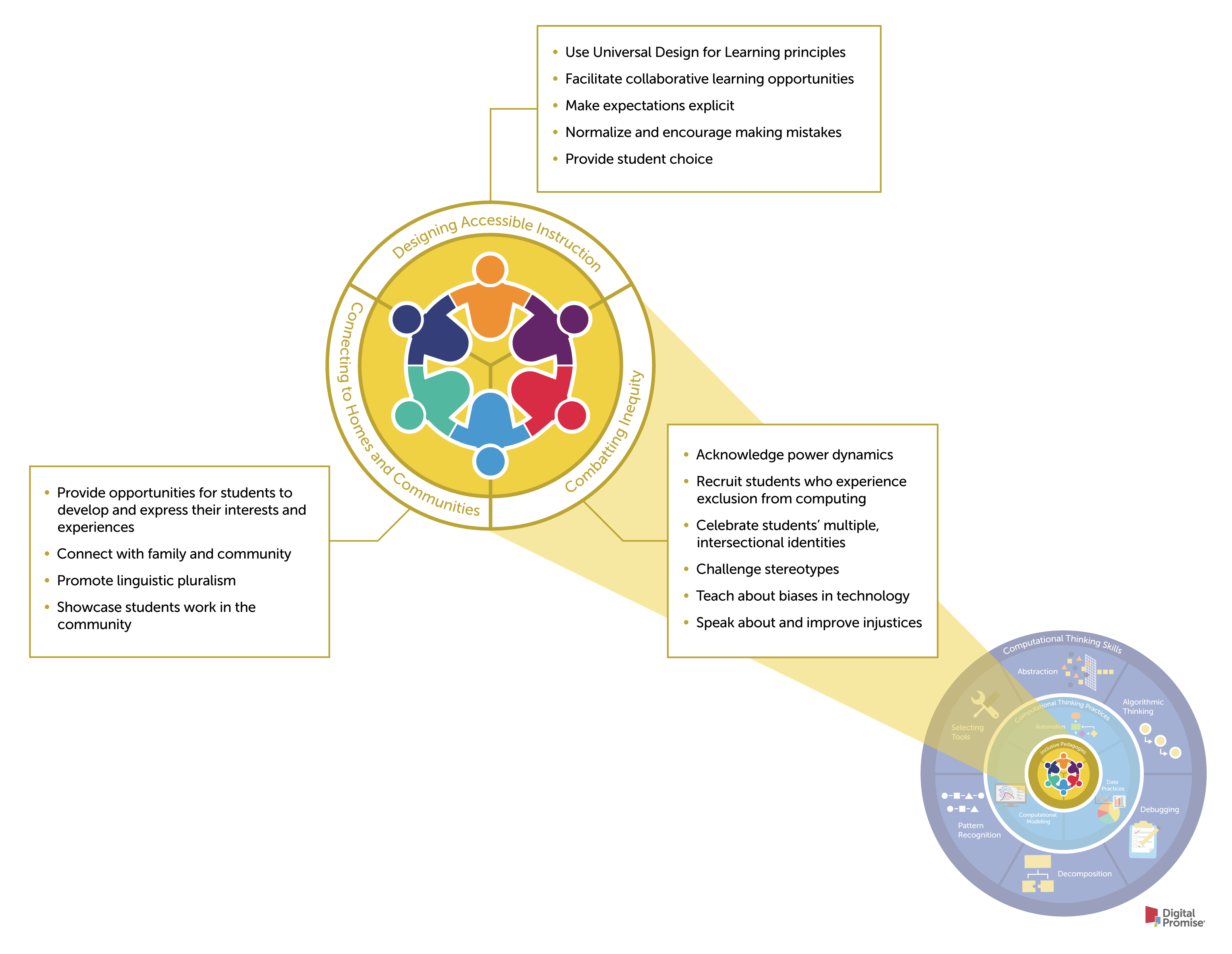
Many different terms are used when talking about computing, computer science, computational thinking, and programming. Computing encompasses the skills and practices in both computer science and computational thinking. While computer science is an individual academic discipline, computational thinking is a problem-solving approach that integrates across activities, and programming is the practice of developing a set of instructions that a computer can understand and execute, as well as debugging, organizing, and applying that code to appropriate problem-solving contexts. The skills and practices requiring computational thinking are broader, leveraging concepts and skills from computer science and applying them to other contexts, such as core academic disciplines (e.g. arts, English language arts, math, science, social studies) and everyday problem solving. For educators integrating computational thinking into their classrooms, we believe computational thinking is best understood as a series of interrelated skills and competencies.

Figure 1. The relationship between computer science (CS), computational thinking (CT), programming and computing.
In order to integrate computational thinking into K-12 teaching and learning, educators must define what students need to know and be able to do to be successful computational thinkers. Our recommended framework has three concentric circles.

Figure 2. A framework for computational thinking integration.
What does inclusive computational thinking look like in a classroom? In the image below, we provide examples of inclusive computing pedagogies in the classroom. The pedagogies are divided into three categories to emphasize different pedagogical approaches to inclusivity. Designing Accessible Instruction refers to strategies teachers should use to engage all learners in computing. Connecting to Students’ Interests, Homes, and Communities refers to drawing on the experiences of students to design learning experiences that are connected with their homes, communities, interests and experiences to highlight the relevance of computing in their lives. Acknowledging and Combating Inequity refers to a teacher supporting students to recognize and take a stand against the oppression of marginalized groups in society broadly and specifically in computing. Together these pedagogical approaches promote a more inclusive computational thinking classroom environment, life-relevant learning, and opportunities to critique and counter inequalities. Educators should attend to each of the three approaches as they plan and teach lessons, especially related to computing.

Figure 3. Examples of inclusive pedagogies for teaching computing in the classroom adapted from Israel et al., 2017; Kapor Center, 2021; Madkins et al., 2020; National Center for Women & Information Technology, 2021b; Paris & Alim, 2017; Ryoo, 2019; CSTeachingTips, 2021
A micro-credential is a digital certificate that verifies an individual’s competence in a specific skill or set of skills. To earn a micro-credential, teachers submit evidence of student work from classroom activities, as well as documentation of lesson planning and reflection.
Because the integration of computational thinking is new to most teachers, micro-credentials can be a useful tool for professional learning and/or credentialing pathways. Digital Promise has created micro-credentials for Computational Thinking Practices. These micro-credentials are framed around practices because the degree to which students have built foundational skills cannot be assessed until they are manifested through the applied practices.
Visit Digital Promise’s micro-credential platform to find out more and start earning micro-credentials today!